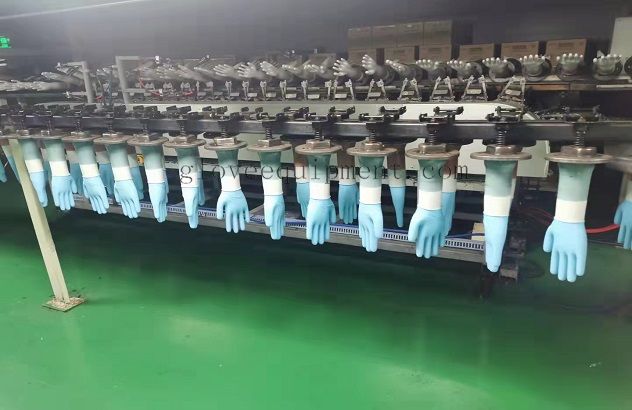How do you manufacture nitrile gloves?
Nitrile gloves have become an essential part of personal protective equipment (PPE) across various industries, from healthcare to food processing and beyond. These gloves offer superior barrier protection against chemicals, pathogens, and contaminants, making them a preferred choice for individuals seeking reliable hand protection. In this article, we delve into the intricate manufacturing process of nitrile gloves, shedding light on the steps involved in transforming raw materials into the versatile and crucial safety gear we rely on.
Raw Material Preparation
The manufacturing journey of nitrile gloves begins with the selection and preparation of raw materials. Nitrile rubber, a synthetic polymer derived from petrochemicals, is the key ingredient. The raw nitrile material is mixed with other additives such as accelerants, stabilizers, and colorants to achieve the desired properties, such as elasticity, strength, and color.
Mixing and Compounding
In this phase, the prepared nitrile compound undergoes mixing and compounding to ensure uniform distribution of additives and achieve consistent glove properties. This process involves precise blending and homogenization to create a homogeneous mixture that will result in gloves with the desired physical and chemical characteristics.
Dipping Process
The dipping process is a crucial step in glove manufacturing, where molds or formers are coated with the nitrile compound to create the glove shape. The formers are dipped into the nitrile solution multiple times, allowing layers to build up and form the glove thickness. Each dip is followed by a drying phase to solidify the layer before the next dip. This process results in multiple layers that contribute to the glove's strength and barrier properties.
Vulcanization and Curing
After the dipping process, the gloves are subjected to vulcanization and curing, which involves heating the gloves to cross-link the polymer chains and improve their strength, elasticity, and resistance. This step ensures that the gloves achieve their final properties and are capable of withstanding the demands of various applications.
Stripping and Quality Control
Once the gloves are fully cured, they undergo a stripping process where they are removed from the formers. This may involve manual or automated methods, depending on the manufacturing facility. Following stripping, the gloves undergo rigorous quality control tests to assess factors such as thickness, tensile strength, barrier integrity, and visual appearance. Any gloves that do not meet the specified standards are discarded.
Packing and Sterilization
The final step involves packing and, if necessary, sterilizing the gloves. The gloves are carefully inspected, counted, and packaged into appropriate quantities. For medical applications, the gloves may undergo sterilization using methods such as gamma irradiation or ethylene oxide gas to ensure they are free from contaminants and suitable for use in sterile environments.
Conclusion
The intricate process of manufacturing nitrile gloves involves a sequence of precise steps, from raw material preparation to packaging and sterilization. The result is a versatile and essential product that provides reliable hand protection across a range of industries. As the demand for high-quality PPE continues to grow, understanding the meticulous manufacturing process behind nitrile gloves emphasizes the importance of this critical safety gear in safeguarding individuals and promoting a safer working environment.if you want buy a nitrile glove machine.contact us

评论
发表评论